Online Video Hosting
Host, Manage and Share Your Videos in Dacast’s Cloud Video Platform.
Set up as many pay-per-view streaming prices as you want on your video content. Control rates, promo codes, and viewing windows. Utilize our robust video streaming CMS to record, transcode, publish, monetize, and analyze your live and on-demand content video content. Leverage the intuitive dashboard to create your own automated workflow with our video APIs and advanced developer tools.
No credit card required. By clicking Start Free Trial you agree to ourterms and conditions.

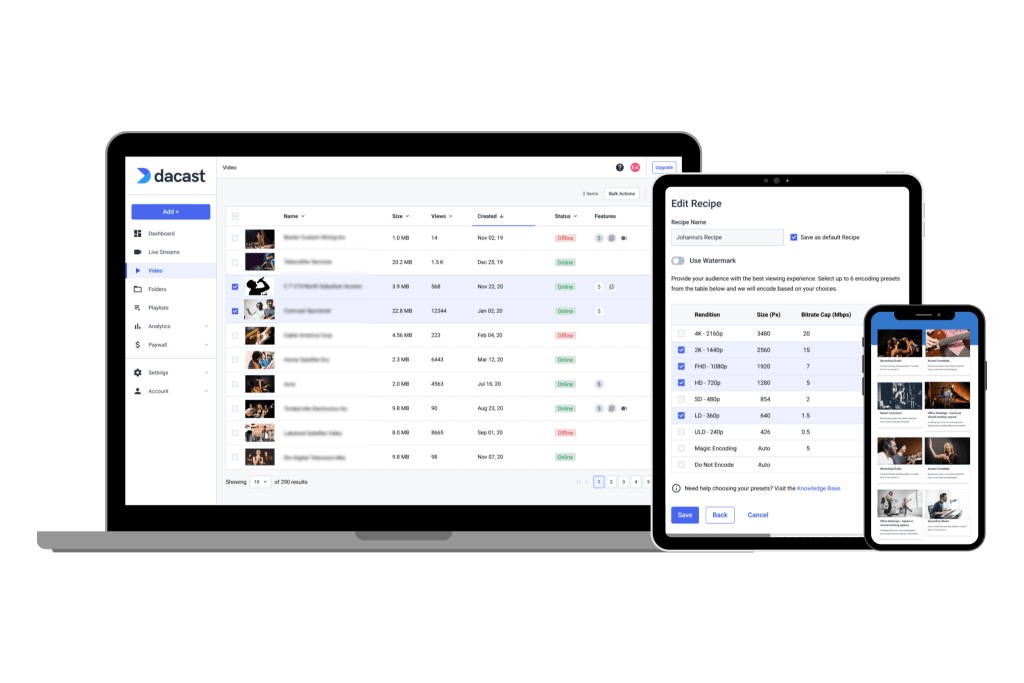
Video Content Management System
Organize and Manage Your Videos with our CMS.
Dacast’s content management tools are here to help you manage and organize your video content. Advanced video CMS tools allow you to group videos, upload, delete and edit in bulk. These features also help with sharing and embedding. Explore CMSVideo Transcoding
Prepare your content for ABR streaming.
Transcoding is an important part of broadcasting high-quality video content. It resizes your videos and creates multiple renditions for optimal Adaptive Bitrate playback on any device. Learn More
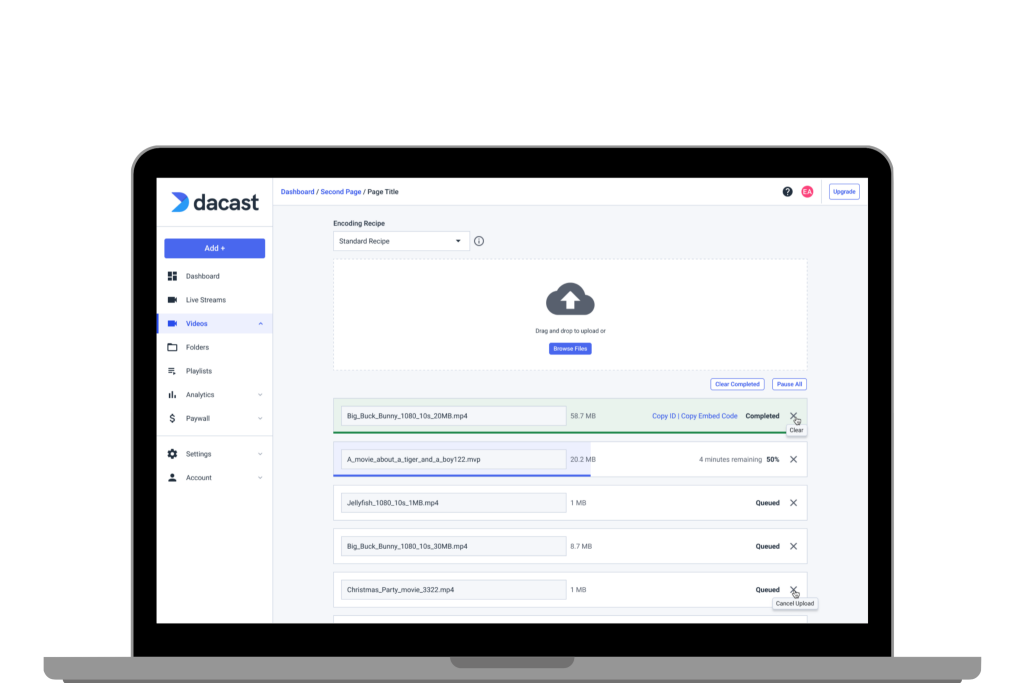

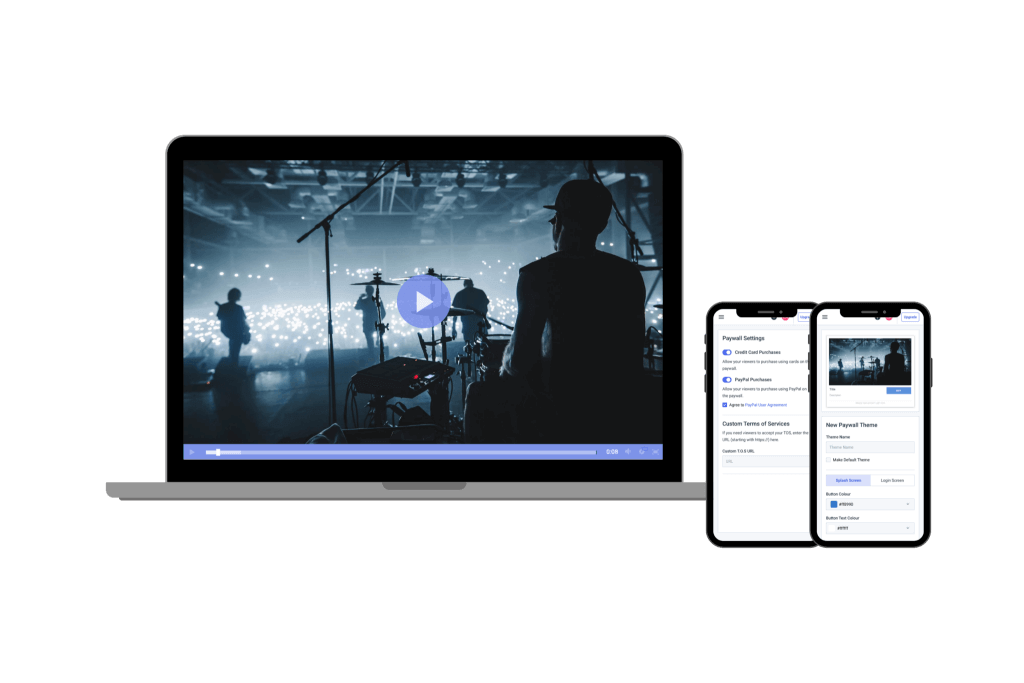
Live Recording
Capture and share your live stream content.
Record live and streaming video to upload to your on-demand library. Maintain 100% control of your content by allowing viewers to watch a replay of the live stream if they missed it the first time. Let's GoVideo Privacy and Security
Protect your video content.
Security and privacy are two of Dacast’s biggest concerns. Our online video hosting platform is designed to protect your content and other sensitive information. Host Securely
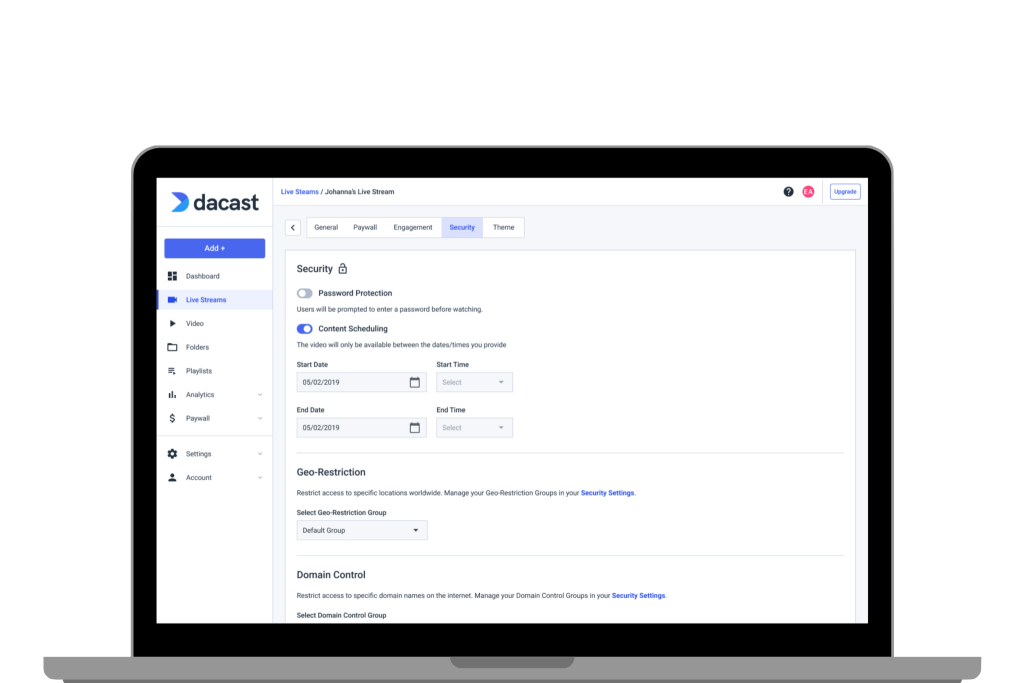

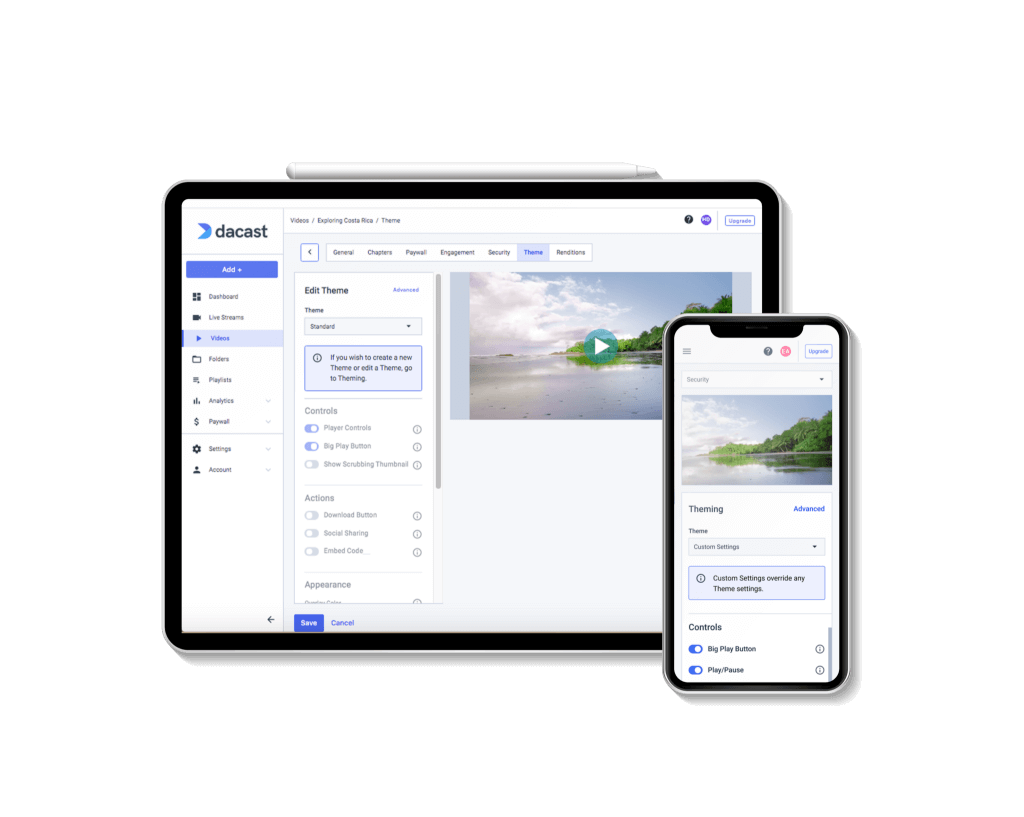
Mobile Video Hosting
Broadcast for viewers on the go.
Did you know that the majority of video content is streamed on mobile devices? Broadcast with an all-device video player to reach the largest audience. I'm InterestedDirect S3 Upload
Deliver video with speed and efficiency.
Use Dacast’s S3 FTP upload feature to make your video upload more efficient. SFTP upload allows you to transfer multiple videos at the same time. Get Started
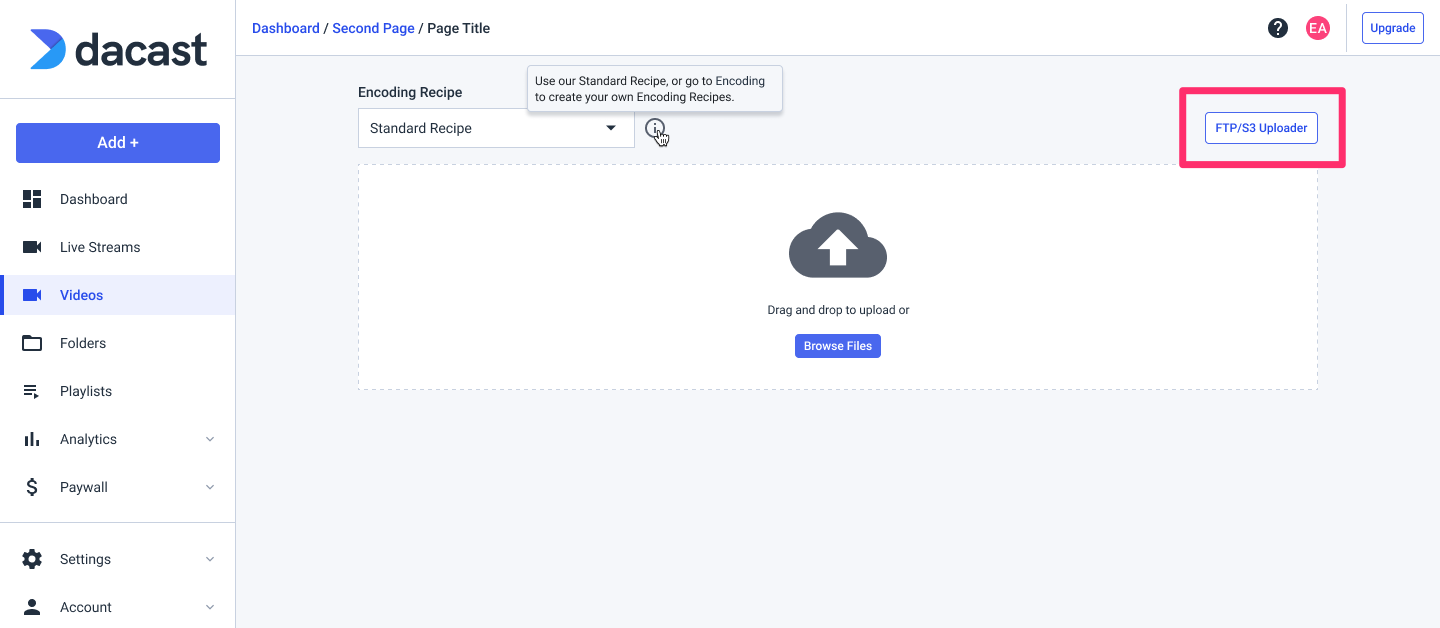

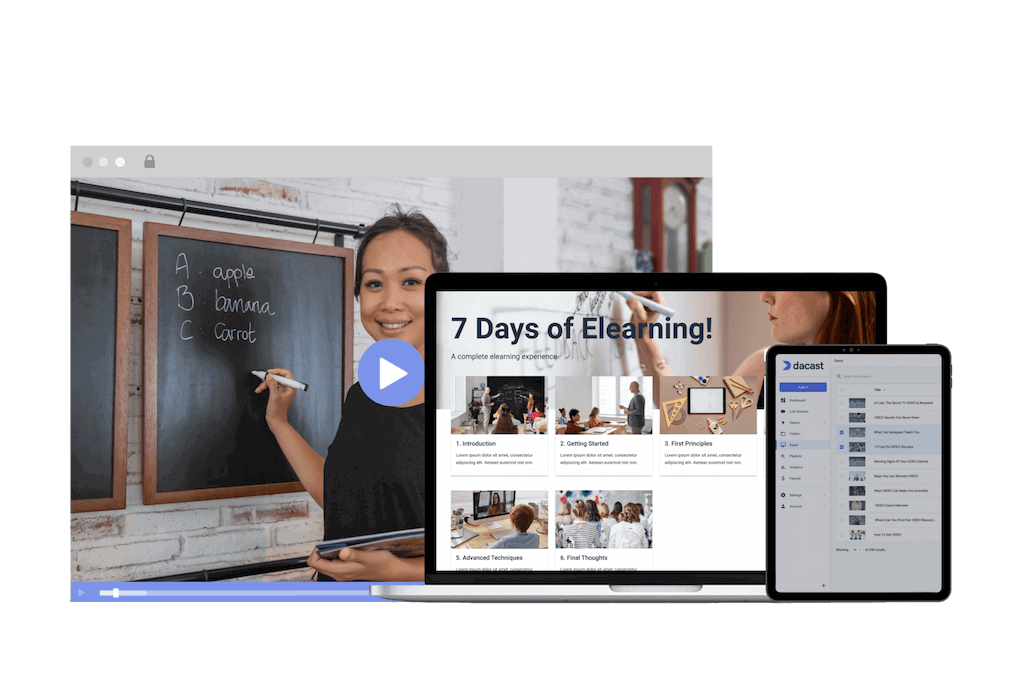
Expo Video Portal
Create a Branded Video Gallery.
Display your VOD library in an immersive video gallery, and customize the landing page to reflect your brand. With Expo, you can quickly put together a professional web-like gallery for featured content. Create an unlimited number of Expos to display different playlists of content to curate each gallery to suit your audience’s needs. Monetize your gallery with ad integration or our secure paywall. Get the Details“The support that Dacast offers is particularly good compared to other streaming providers, making them a clear choice for my business.”
CEO at ComeSee TV
24/7 Technical Support
The reliable help you need, when you need it
Our customer service team is here 24/7 to help you make the most of your streaming solution. Plus access a comprehensive knowledge base and dynamic online community of professionals.
SupportMost Popular Features


Mobile Streaming
Stream live to phones
Our HTML5 video player ensures compatibility with modern devices and browsers. No configuration is required, whether on a smartphone or a smart TV.
Learn more

White-label Platform
Your logo, your brand
Customize our video player with your logo and colors to put your brand front and center. The look and feel of your content are completely up to you.
Show Me How

High-Definition
Broadcast in full HD quality
Deliver pristine, quality video with multi-bitrate technology in full HD 1080p resolution to ensure that every viewer has an optimal experience.
Stream in HD

Embed Videos
Share video content
Use embed codes to easily share a video or live stream on any web page. Or, share videos with others via social media.
Get Started

Video Transcoding
Deliver your video
Use our transcoding services to offer your viewers the video quality they need according to their devices.
Let's Go

Secure Video Upload
Handle your video library
Bulk upload your video and add the layer of security your want. Access more video uploading and security tools via our advanced video hosting platform.
Upload SecurelyBest Streaming Pricing
Feature-rich and cost-competitive
Dacast is the only video platform offering high-performance live streaming and video hosting features at the best prices on the market.
Check It Out6 Reasons to Choose Dacast
Live Streaming and Video Hosting Platform


